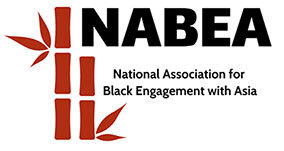Online Community Writing Workshops

Passing along info about short-term, low-cost creative workshops for adults of any age, sponsored by Wilkes University, a low-residency MFA program:
Enjoy inexpensive non-credit 5-6 week creative writing workshops in poetry, fiction, nonfiction, and screenwriting. Workshops are open to adults of any age or education level and are conveniently held online via Zoom.
A highlight of the series is a weekend session on screenwriting, presented by Wilkes creative writing faculty member and screenwriter of Tigerland Ross Klavan.
https://wilkes.edu/writingworkshops
JETwit’s JET Alum Movers & Shakers: Emmalee Manes, Toyama-ken (2016-2019)
************
JETwit’s JET Alum Movers & Shakers is produced by Ryan Hata (Tottori-ken, 2014-2017), Margie Banin (Kochi-ken, 2005-2007), and Jim Walsh (Fukushima-ken, 2018-2020). Want to be featured next? Submit your information here.
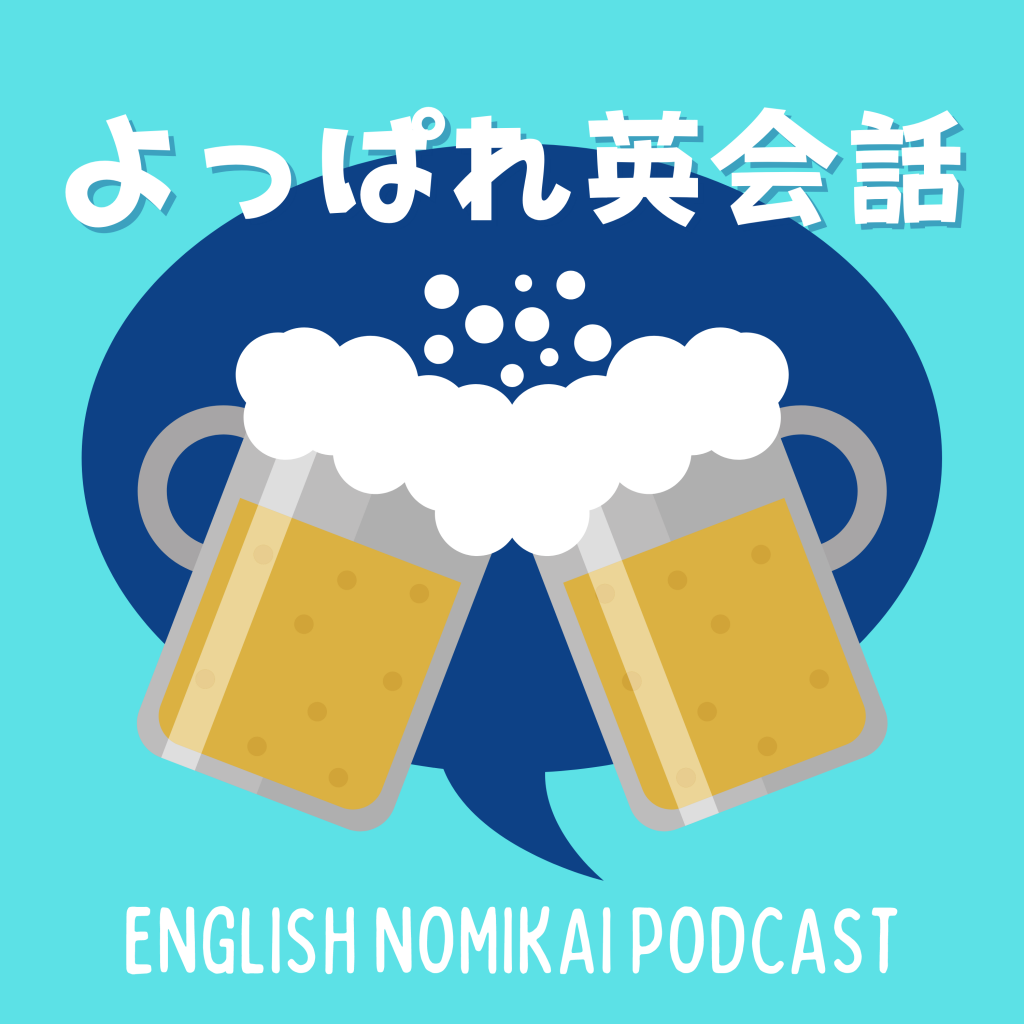
Accomplishment:
New Eikaiwa Podcast for Japanese English-learners
More Information:
After returning from her 3 years as a high school ALT in Toyama, Emmalee returned to Nashville, Tennessee where she currently works at the Consulate-General of Japan in Nashville sharing Japanese culture through social media. After struggling to keep growing her Japanese-language learning while in the U.S., Emmalee discovered the power of Japanese conversation podcasts in keeping her immersed in the language. Seeing the need for similar resources for Japanese English-learners, Emmalee decided to put her teaching experience and connections to use by creating a podcast that focuses on casual English conversation.
Public Information:
Podcast: https://yoppareikaiwa.buzzsprout.com
Podcast Instagram: https://www.instagram.com/yoppareikaiwa/
Consulate Instagram: https://www.instagram.com/japaninnashville/
Email: emmaleemanes@gmail.com
LinkedIn: https://www.linkedin.com/in/emmaleemanes/
Japan Insights—Practice of storytelling in post-disaster Japan
************By Makoto Shirai, secretary, Japan-Insights Research Institute (Non-profit organization in Tokyo)
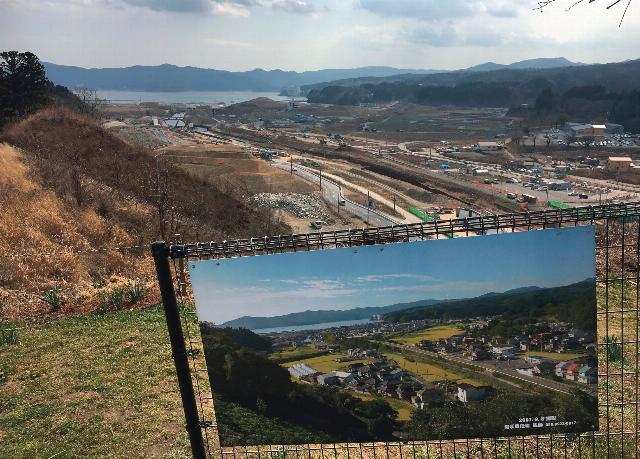
Dear Friends,
Have you heard the lives of Tohoku?
Let me introduce an essay from Japan-Insights archives.
The ninth one is on Kataribe: A keyword to Recovery by Dr. Flavia Fulco.
https://topics.japan-insights.jp/Public/pdf/japan-insights_jp/topics/JIN_Kataribe.pdf
Please share this expert’s experience!
Japan-Insights is a nonprofit open database compiled by leading experts in Japanese studies. The posts present a broad range of historical and contemporary topics that encourage visitors to engage with the real Japan through immersive experiences. Follow the Facebook page and website to learn about and share these insights from around the country!”
#japan #japaneseculture #Tohoku
Kaguya-sama: Love is War. A Rom-com that’s Actually Funny.
By Jack McDonough, 2021 prospective JET
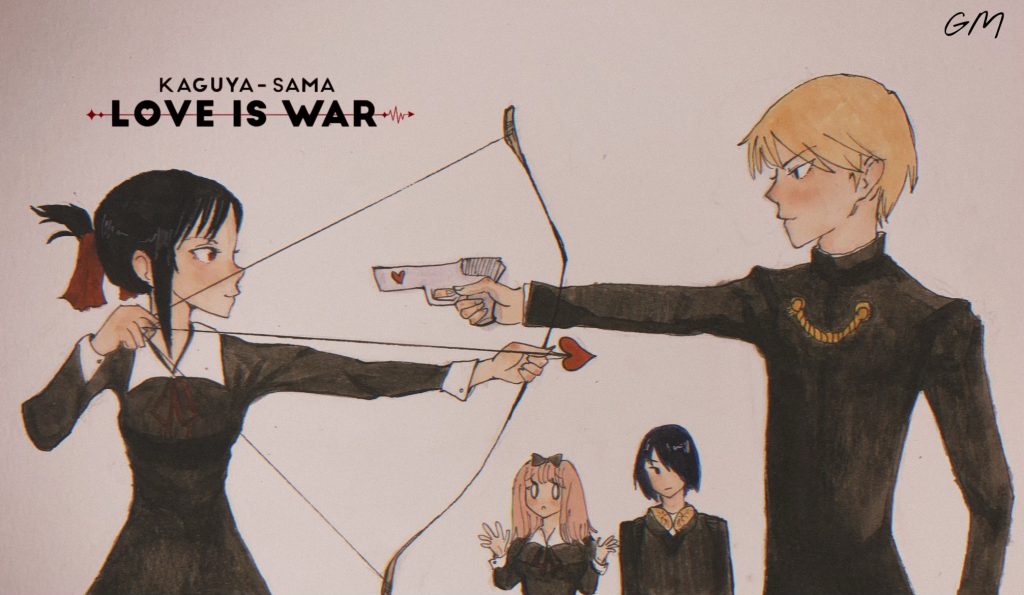
Rom-coms: the classic “will they or won’t they” story that has been done to death. Think Ross and Rachel from Friends or Harry and Sally from When Harry Met Sally and you’ve got perfect examples of this trope. You’ll binge an entire show on Netflix just to see whether your two favorite characters finally get together, and once it’s over, you’ll probably forget about the chase and only remember the finale. I bet you didn’t even laugh along the way. Kaguya-sama: Love is War is the remedy to the classic rom-com letdown: it’s a show that’s actually funny and makes the pursuit the thing worth watching.
Kaguya-sama is an anime based on the manga Kaguya-sama wa Kokurasetai – Tensai-tachi no Ren’ai Zunōsen: “Kaguya Wants to Make Them Confess: The Geniuses’ War of Hearts and Minds.” The show features an epic, romantic “game of chess” wagered by Kaguya Shinomiya and Miyuki Shirogane. Kaguya is the heir to the Shinomiya Group, a business conglomerate that holds enormous power over Japan: she flips between being a naive, love-sick girl and an imperturbable master of deception. Miyuki is the broke genius who earned a scholarship to join Kaguya as a student at the prestigious Shuchiin Academy. While they serve as the heads of the student council, they rarely concentrate on school matters: all of their time is spent trying to get the other to confess their love. Neither can back down; the stakes are too high.
To Miyuki and Kaguya, confessing is tantamount to losing and becoming subservient to the object of your affection: Miyuki won’t confess as he believes he would appear like a poor peasant, while the Shinomiya idea of “winning no matter what” keeps Kaguya silent. Since neither can confess, a hilarious war of schemes and ploys ensues as these teenage geniuses try to catch the other slipping; their daily battles are bolstered by a narrator who informs the audience of exactly what Kaguya and Miyuki are thinking when their machinations blow up in their faces. The proverbial “wrench” in their plans is their classmate Chika Fujiwara, the happy-go-lucky secretary of the student council who is always down for mischief. They are also joined by Yu Ishigami, a dower boy who would rather stay home and play video games; he is often the only character to see Kaguya’s “ice-queen” nature and promptly runs from her sight when he can. There’s a great chemistry in this group of four that keeps the antics from getting stale and provides Kaguya and Miyuki outlets for their frustration.
The genius (get it?) of the show is its premise: people are geniuses in life and dumb in love. Equal parts are devoted to the romance and to the comedy that creates a real romantic-comedy. The story develops as Kaguya and Miyuki try their best to trick the other; all the while missing out on a great relationship because of their inhibitions. In fact, Miyuki only became the president of the student council and the number one student at Schuchiin just to be worthy of Kaguya’s affection. Both of these characters are so worried about social appearances and losing face that they’d rather spend all their time trying to checkmate the other than just say “I love you.” In a way, it’s actually pretty sad: Kaguya and Miyuki only have a limited time together as they’ll eventually graduate from high school. The juxtaposition between the side-bursting shenanigans and the saddening thought that they might actually never confess leaves the viewer with a mix of elation and despair. What’s even better, is that Kaguya, Miyuki, Chika, and Ishigami quickly go from one-note characters to having deep emotions and fulfilling motivations for their actions and fears. While their circumstances are certainly unrealistic, their emotions are relatable and you’ll find yourself compelled to keep watching for both the laughs and the attachments you make with the cast.
I first watched Kaguya-sama by accident when searching Hulu for a new show to watch; I was hooked by the show before I even realized my mistake. Kaguya-sama does have a lesson buried beneath the escapades: go for it. Do the thing that’s embarrassing; you might lose face or be laughed at, but it’s better to go for it and miss than to never take a chance at all. Kaguya and Miyuki might run out of time before they realize that it’s better to take the leap of faith: don’t be like Kaguya and Miyuki. You’ll find yourself outsmarting these geniuses by just listening to your heart.
WeRepresent Conference: March 10-12, 2021, FREE Registration

Please share this FREE conference with any potential study abroad students, especially underrepresented racial and ethnic groups, students with disabilities, students in the LGBTQI+ community, and students from low-income backgrounds. The conference helps to bolster their participation in applying for study abroad scholarships as the Gilman, Critical Language, Fulbright, and Boren programs. This is a great opportunity and it is free!
This is a FREE conference to bolster participation in Gilman, Critical Language, Fulbright, and Boren programs for students from underrepresented racial and ethnic groups, students with disabilities, students in the LGBTQI+ community, and students from low-income backgrounds.
WeRepresent is led by:
1. Pandora White, PhD, MPH – former Fulbright and Gilman Alumni Ambassador
2. Vanessa Diaz – former Fulbright alumni ambassador, co-founder of Fulbright Latinx
3. Ashleigh Brown-Grier – founder of Fulbright HBCU, Fulbright alumni ambassador
4. Sean Funcheon – Gilman Alum
They are supported by a grant from the Citizen Diplomacy Action Fund for U.S. alumni of Department of State exchange programs.
Do you know about NABEA (the National Association for Black Engagement with Asia)?
**************************
We recently learned about the National Association for Black Engagement with Asia (NABEA) which seeks to connect Black Asia specialists in both the public and private sectors. They also hope to increase the representation of Black Americans engaging with Asia. Through their programming, they work towards building a mutually beneficial economic, political, social, and cultural relationship between Black America and the Indo-Pacific region.
There seems to be a natural connection between the JET alumni community and NABEA. And in fact, we’re currently aware of four JET alumni who are also members of NABEA:
- Jennifer Butler (Shizuoka-ken, 2001-2004) – Manager of Student Relations for the Ashinaga Foundation and former JETAA USA Country Representative and JETAA chapter president
- Mya Fisher (Kanagawa-ken, 2000-2002) – Founder of Global Equity Forward, a strategic consulting and advisory company for international inclusion, diversity, and racial awareness.
- Jody Dixon (Yamanashi-ken, 2009-20014) – Program Manager for the American Association of State Colleges & Universities overseeing their China-US Rising Star Study Program
- Savannah Williams (Shizuoka-ken, 2018-2020) – a Community Manager and Event Coordinator for Startup Lady Japan
According to Fisher, “NABEA is an important and growing community of Black Americans who are specialists actively engaged in Asia. Their publicly accessible and searchable database of Black, Indo-Asia experts is a great addition to the continued work of increasing representation and inclusion in the U.S.-Japan community specifically, and the Indo-Asia region more broadly.”
If you are interested in joining NABEA, go to their website for more info: http://usnabea.org/
And if you’re already a member, feel free to post in the comments section below and let everyone know!
Japan Insights—Early Japanese Clocks and the Skills of the Craftsmen Who Made Them
…………..
By Makoto Shirai, secretary, Japan-Insights Research Institute (Non-profit organization in Tokyo)
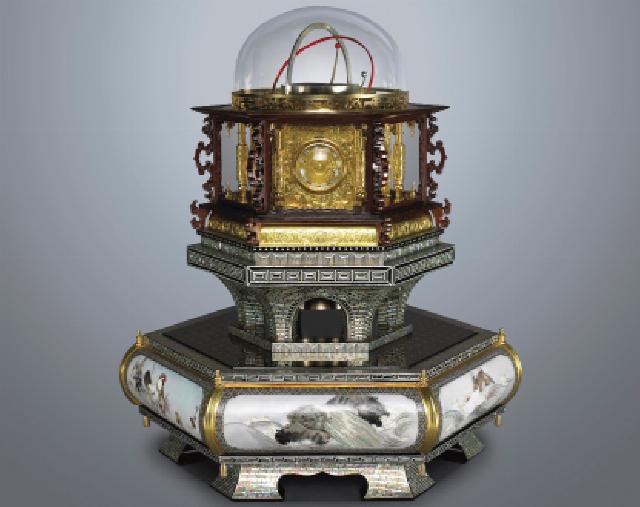
Dear Friends,
Are you interested in clocks in Edo period?
Let me introduce an essay from Japan-Insights archives.
The eighth one is on Time of the Tokugawa Period by Mr. Ashley Strachan.
https://topics.japan-insights.jp/Public/pdf/japan-insights_jp/topics/JIN_Wadokei.pdf
Please share this expert’s experience!
Japan-Insights is a nonprofit open database compiled by leading experts in Japanese studies. The posts present a broad range of historical and contemporary topics that encourage visitors to engage with the real Japan through immersive experiences. Follow the Facebook page and website to learn about and share these insights from around the country!”
#japan #japaneseculture
Japan and the Midwest – A networking event connecting Japan and the Heartland

Laurasian Institution Presents: Japan and the Midwest – A networking event connecting Japan and the Heartland
Connecting Japan and the Heartland, this is a casual networking event for professionals. Whether you have a connection to the Midwestern U.S. or Japan, join us to nurture connections between both.
〜アメリカ中西部と日本を結ぶ交流会〜
日本と中西部に関係がある方々を集め、国を超えてオンライン交流会を開催します。中西部での思い出でを語ったり、新しい中西部とのつながりを作りに、お気軽にご参加下さい。
参加費無料・抽選あり
Saturday, February 20th at 8pm (ET) / 7pm (CT)
日本時間2月21日 (日) 午前10時
The Japan Foundation of New York Literary Series: Yu Miri and her translator Morgan Giles
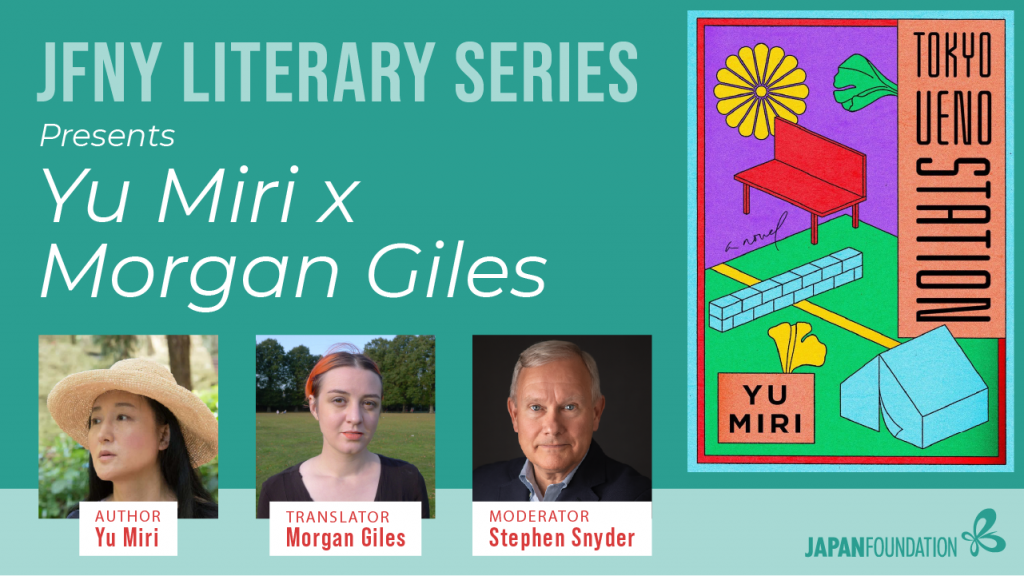
The Japan Foundation, New York have recently launched JFNY Literary Series. For this new talk series, we will be inviting notable writers in Japanese literature and their translators to discuss their work, speak on the art of translation, and touch upon the current literary scene in Japan.
For our inaugural session, we have invited Yu Miri and her translator Morgan Giles. Yu’s novel Tokyo Ueno Station, which was translated by Giles, won the 2020 National Book Award for Translated Literature. They are joined by moderator Dr. Stephen Snyder, interpreter Bethan Jones, and curator Allison Markin Powell from the collective, “Strong Women Soft Power”.
The event is now available to watch on our YouTube channel! Watch the event here: https://www.jfny.org/event/jfny-literary-series-yu-miri-x-morgan-giles/
JETwit’s JET Alum Movers & Shakers: Todd Wassel, Shiga-ken (1999-2001)
************
JETwit’s JET Alum Movers & Shakers is produced by Ryan Hata (Tottori-ken, 2014-2017), Margie Banin (Kochi-ken, 2005-2007), and Jim Walsh (Fukushima-ken, 2018-2020). Want to be featured next? Submit your information here.
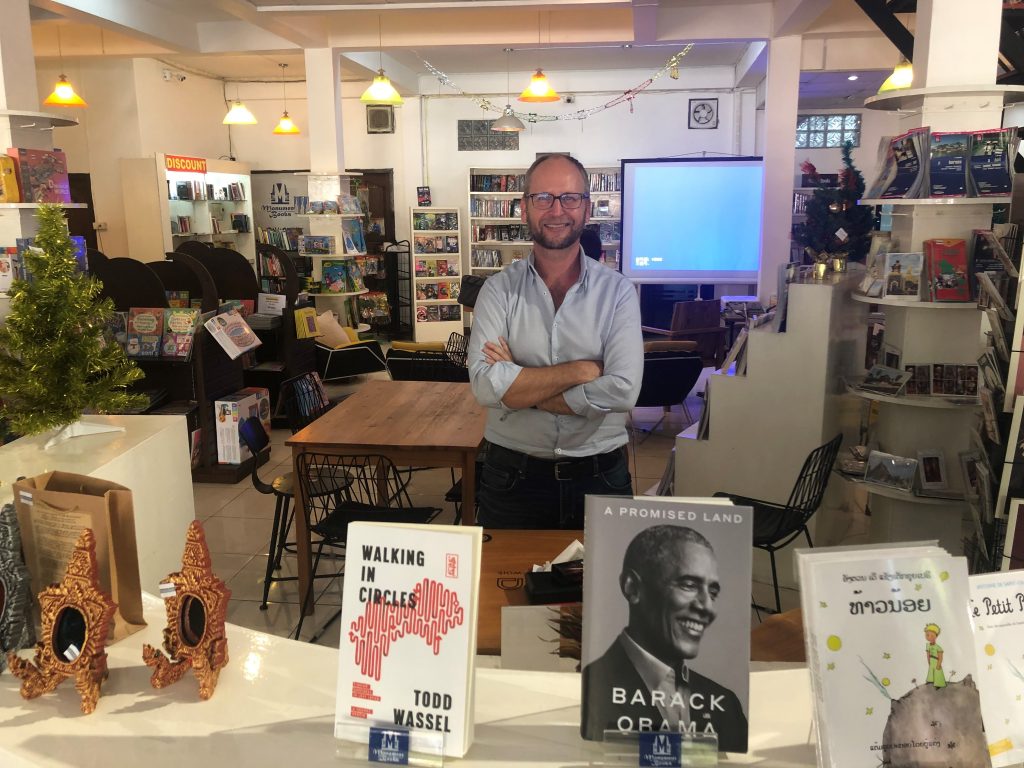
Accomplishment:
New Book on Japan
Walking in Circles: Finding Happiness in Lost Japan
Book Description Guided by a wandering ascetic hiding from the Freemasons; naked Yakuza; a scam artist pilgrim; and a vengeful monk, Walking in Circles is a fun, inspirational travel memoir set in a Japan few outsiders ever get to see.
Award-winning writer Todd Wassel draws on over twenty years in Japan to retell his epic journey through the contradictions of a contemporary yet traditional Japan while trying to overcome the barriers to happiness modern life throws up.
Over half a decade after first landing in Japan Todd is lost, unable to go home, or move forward. Convinced there is more to life, he risks everything to return to the one place he found answers years before: the ancient Shikoku Henro pilgrimage. Walking the 750-mile henro path, sleeping outside each night, Todd is armed with only a Japanese map and the people he meets along the way.
Can he find what he’s looking for before the path, or his new friends, break him?
More Information:
After the JET program I continued living and teaching for 5 years. From there I switched professions to international development working in and visiting over 45 countries. I’m now the Country Representative for The Asia Foundation in Laos. I still get back to Japan at least once a year to visit my wife’s family, and explore the mountains with my family.
Public Information:
Buy the Book: mybook.to/WalkingInCircles-AJET
Website: https://toddwassel.com
Facebook: https://www.facebook.com/toddwasselauthor
Email: todd@toddwassel.com
By Jack McDonough, 2021 prospective JET
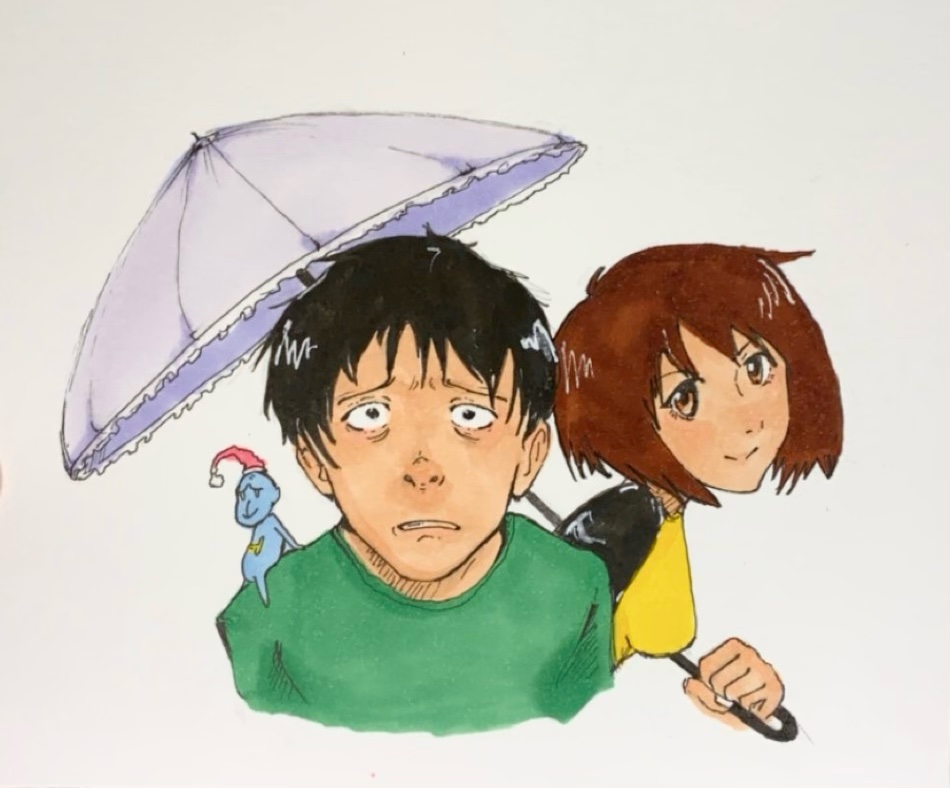
Most anime feature protagonists who are special: characters who are brave, strong, or brilliant; think Light Yagami from Death Note or Goku from Dragon Ball. These characters either inspire you or have incredibly enviable traits. Welcome to the N.H.K. does not have a special character: no knight in shining armor, no undefeatable hero. This anime’s main character is lazy, pathetic, and cringy: Tatsuhiro Sato, a man who thinks he is being controlled through his TV by the Nihon Hikikomori Kyokai, the Japanese Hikikomori Organization, a play on the real-life Nippon Hoso Kyokai, the Japanese Broadcasting Corporation.
Welcome to the N.H.K. is an anime adaptation of the light novel N.H.K. ni Yōkoso! by Tasuhiko Takimoto, featuring Tatsuhiro Sato, a self-proclaimed hikikomori, meaning recluse: hikikomori do not work or attend school, do not have a diagnosed mental disorder, and have been at home for six months or longer without interacting with people other than their family. Sato also calls himself a NEET: “Not in Education, Employment, or Training.” He moved to Tokyo from Hokkaido to attend university, but experienced a panic attack and dropped out of school. He binges television all day, receiving an allowance from his parents; however, the allowance shrinks throughout the show due to his father being fired from work.
Sato is surrounded by a cast of characters who all have issues: Kaoru Yamazaki, an otaku who shirks his responsibilities in Hokkaido to create video games in Tokyo; Hitomi Kashiwa, a female office worker who is depressed and obsessed with conspiracies; and Misaki Nakahara, a broken girl who is searching for someone more pathetic than herself to cling on to.
The relationships between Sato and the rest of the cast are dysfunctional and self-serving. Hitomi uses Sato to talk about her conspiracy theories in hopes that he will care about her and alleviate her depression, while Sato tries to rekindle the physical relationship he had with her in high school. Kaoru uses Sato to help him create a video game so that he can prove his escape to Tokyo was not in vain, while Sato plans to show their game to Misaki so that he can prove he isn’t a total loser. Misaki needs Sato to prove to herself that there is someone more pathetic than she is, while Sato relies on a bevy of services Misaki provides him, e.g. buying groceries, preparing his meals, cleaning his apartment: essentially keeping him alive. Welcome to the N.H.K. is adept at portraying the complexity of its characters and relationships, and you’ll find yourself alternately rooting for and cursing at the cast in between scenes.
Welcome to the N.H.K. will make you laugh and feel empty at the same time; you’ll find Sato’s inability to function hilarious and cringy, all while a creeping sadness envelopes you throughout the show. The emotion of the show is bolstered by the soundtrack which oscillates between screamo tracks when Sato is having a breakdown and slow, smooth guitar and synth tracks when Hitomi or Misaki are reaching out to Sato for comfort. Every element of this show just works to create a unique experience that you won’t get from any other anime: you just have to go watch and discover it for yourself.
Writing this recommendation has been extremely difficult and I finally realize why: Welcome to the N.H.K. isn’t a TV show, it’s a sleight of hand trick. It’s a trick done right in front of your eyes, in slow-motion, and you still can’t tell how the trick is done. N.H.K. is a depressing show about hope: the hope to persevere even in the face of hopelessness. What you’ll find is that Hitomi, Kaoru, Misaki, and even Sato, are regular people: they’ve just experienced one too many little tragedies and need help to get back on their feet. At its conclusion, N.H.K. will give you the hope that you need to continue on: not the hope that things will get better, but that things can get better if you treat yourself and others with dignity and compassion. Protagonists in other anime either have god-like powers or unhealthy habits that are excused because they are the main character, but not Sato. Sato is a great protagonist because he has no powers; he doesn’t have a free pass to be a misanthrope; he is forced to live a life with consequences, just like you and me. Welcome to the N.H.K is a show that will bring you back down to earth: once you’re down there, sulk for a moment, then get back up again.
Japan Insights—Experiencing Edo Culture Near Tokyo
By Makoto Shirai, secretary, Japan-Insights Research Institute (Non-profit organization in Tokyo)
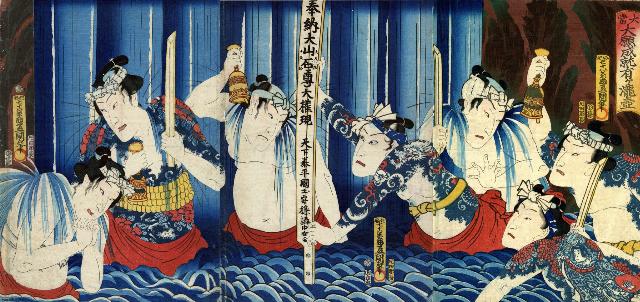
Dear Friends,
Are you interested in Edo Culture?
Let me introduce an essay from Japan-Insights archives.
The seventh one is on Mt. Oyama Pilgrimage by Mrs. Alice Gordenker.
https://topics.japan-insights.jp/Public/pdf/japan-insights_jp/topics/JIN_OyamaPilgrimage.pdf
Please share this expert’s experience!
Japan-Insights is a nonprofit open database compiled by leading experts in Japanese studies. The posts present a broad range of historical and contemporary topics that encourage visitors to engage with the real Japan through immersive experiences. Follow the Facebook page and website to learn about and share these insights from around the country!”
#japan #japaneseculture
Sailor Moon: How These Magical Girls Transformed Our World
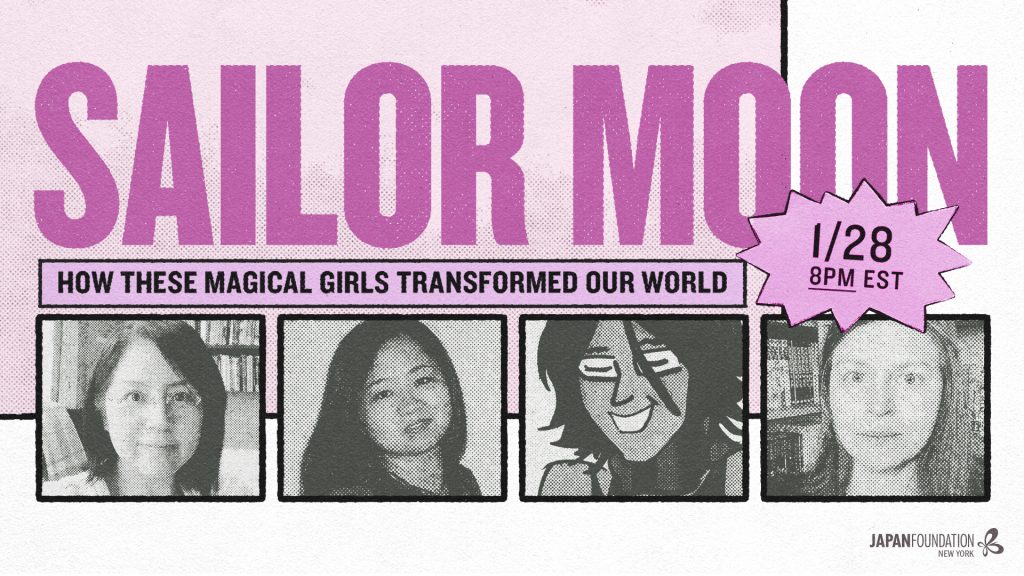
Sailor Moon: How These Magical Girls Transformed Our World
Thursday, January 28, 8PM (EST)
About this Event
Can you believe that it’s been almost 30 years since Sailor Moon was first published in the weekly girl’s manga magazine Nakayoshi in 1992?! The manga and its animation adaptation quickly broke records and became a milestone of ’90s girls’ manga and anime. Sailor Moon next turned into a social phenomenon by reaching far beyond the boundaries of its genre, gaining widespread popularity among adults as well as children, and appealing to all genders and sexual orientations. Then, as it started being exported to other parts of the world, it became many people’s first introduction to Japanese pop culture.
Why was Sailor Moon such a hit when it first appeared, and why is it still so popular today? What led to Sailor Moon‘s rise outside of Japan, and what impact did it have on the generation that grew up with it?
Come join our panel discussion with Kumiko Saito, Mari Morimoto, Samantha Close and Kathryn Hemmann as they explore the history and legacy of Sailor Moon, as well as the fandom and fan culture it helped create in the U.S.
Twitter: https://twitter.com/JF_NewYork/status/1348738956381151234
JETwit’s JET Alum Movers & Shakers: Dr. Mary J. Eberhardinger, Hyogo-ken (2008-2010)
************
JETwit’s JET Alum Movers & Shakers is produced by Ryan Hata (Tottori-ken, 2014-2017), Margie Banin (Kochi-ken, 2005-2007), and Jim Walsh (Fukushima-ken, 2018-2020). Want to be featured next? Submit your information here.
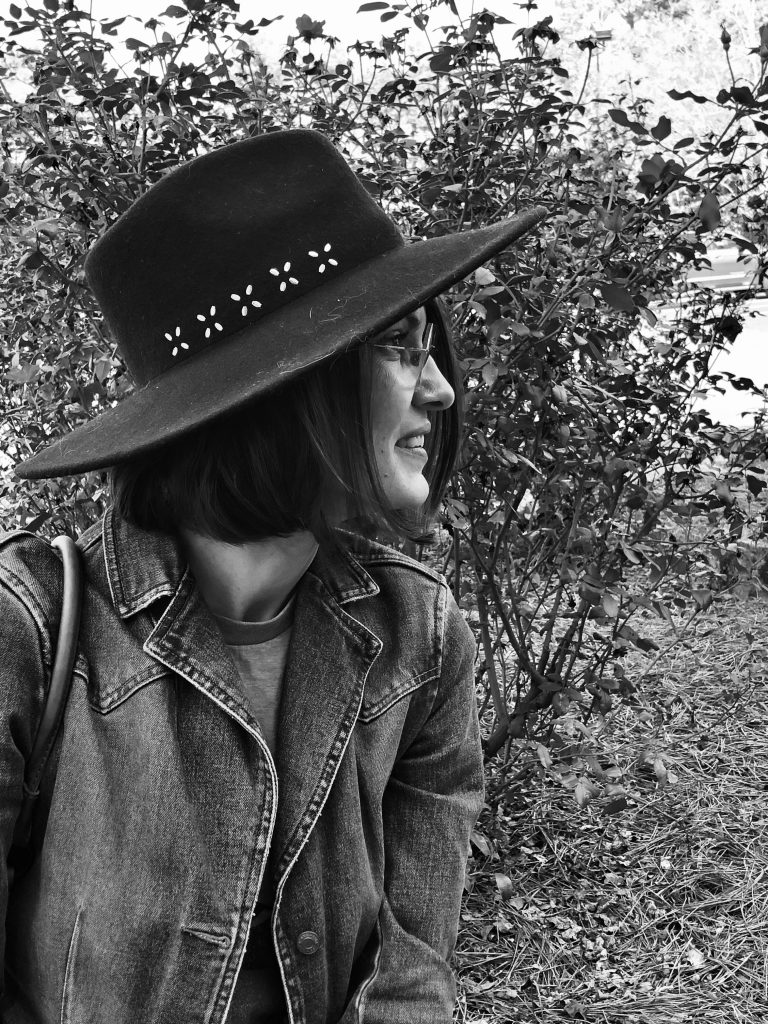
Accomplishment:
Book
More Information:
https://rowman.com/ISBN/9781793639325/A-Rhetoric-and-Philosophy-of-Gifts
https://usjetaa.org/jets-on-japan-forum-issue-no-1/
I’ve lived in Baltimore, Boston, Charlotte, Greensboro, Osaka, Pittsburgh, Singapore, Slippery Rock, and Tanba. I am passionate about having conversations with aspiring JETs, those who wish to pursue graduate or doctoral study, or otherwise. Let’s connect!
Public Information:
LinkedIn: https://www.linkedin.com/in/mary-j-eberhardinger-ph-d-91968527/
Japan Insights—Enjoy Sites and Sights in Edo Period
By Makoto Shirai, secretary, Japan-Insights Research Institute (Non-profit organization in Tokyo)

Courtesy of National Museum of Japanese History
Dear Friends,
Have you looked at Japan from Edo period?
Let me introduce an essay from Japan-Insights archives.
The sixth one is on Samurai Art of Edo period (1603-1867) by Dr. Timon Screech.
https://topics.japan-insights.jp/Public/pdf/japan-insights_jp/topics/JIN_EdoArtAndCulture.pdf
Please share this expert’s experience!
Japan-Insights is a nonprofit open database compiled by leading experts in Japanese studies. The posts present a broad range of historical and contemporary topics that encourage visitors to engage with the real Japan through immersive experiences. Follow the Facebook page and website to learn about and share these insights from around the country!”
#japan #japaneseculture

